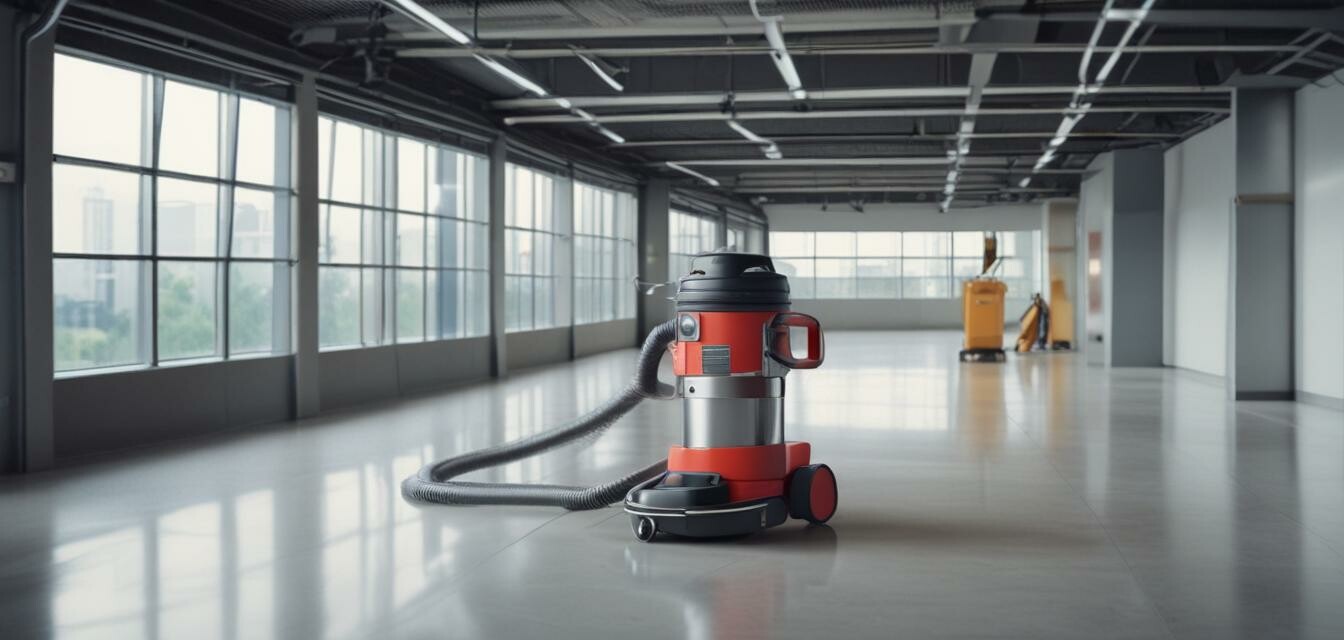
This article was generated using AI and is based on real customer reviews from the Amazon platform. It contains affiliate links, meaning we may earn a commission—at no extra cost to you. As Amazon Associates, we earn from qualifying purchases.
2024 Trends in Industrial Vacuum Technology
- Emerging trends in industrial vacuum technology focus on automation and energy efficiency.
- Smart technology integration is set to enhance user experience and operational efficiency.
- Environmental concerns are driving advancements in eco-friendly vacuum designs.
- Improving filtration systems lead to better air quality and cleanliness in industrial environments.
The industrial vacuum technology landscape is continually evolving as businesses look for ways to improve their cleaning efficiency and effectiveness. With 2024 just around the corner, various trends are emerging that are set to revolutionize how we approach heavy-duty cleaning. In this article, we'll analyze these trends, focusing on automation, smart technology integration, energy efficiency, and eco-friendly designs.
1. Automation and Robotics in Industrial Vacuums
As industries aim to streamline operations, the adoption of automation in industrial vacuums is on the rise. Robotic vacuums are being designed for industrial applications, offering autonomous cleaning solutions that reduce the need for manual labor. Here are some key benefits that automated vacuums provide:
- Increased Productivity: Automation allows for continuous operation without human intervention.
- Labor Cost Reduction: Less reliance on manual cleaning translates to lower labor costs.
- Consistent Performance: Robots ensure uniform cleaning results across all areas.
2. Smart Technology Integration
Smart technology is transforming industrial vacuums by introducing features that enhance user experience:
- IoT Connectivity: Vacuums can be connected to the internet, enabling remote monitoring and control.
- Predictive Maintenance: Sensors in vacuums alert operators when maintenance is needed, reducing machine downtime.
- Data Analytics: Performance data can be analyzed to optimize cleaning schedules and resource usage.
How Smart Technology Enhances Efficiency
Smart technology not only improves the user experience but also significantly increases efficiency by:
- Collecting data to optimize power usage.
- Allowing for customized cleaning schedules based on real-time needs.
3. Energy Efficiency and Sustainability
Environmental concerns are prompting many manufacturers to focus on energy-efficient designs for industrial vacuums. Key aspects include:
| Feature | Description |
|---|---|
| Energy-efficient motors | New technology reduces energy consumption while maintaining performance. |
| Eco-friendly materials | Use of recycled plastics and sustainable materials in construction. |
| Reduced noise pollution | Quieter models allow for use in noise-sensitive environments, reducing distractions. |
With the growing emphasis on eco-friendly practices, businesses are eager to adopt equipment that meets these standards.
Example of Sustainable Practices in Vacuum Technology
Several companies are leading the way by designing products that align with global sustainability goals. For more insights on eco-conscious cleaning equipment, explore our industrial vacuums category.
4. Advanced Filtration Systems
Air quality has become a central concern in maintaining safe work environments. Advanced filtration systems in industrial vacuums contribute to cleaner air as follows:
- HEPA Filters: Capture 99.97% of particles, improving air quality.
- Activated Carbon Filters: Effective at removing odors and harmful VOCs.
- Multi-stage Filtration: Ensures that even the smallest particles are trapped, preventing them from re-entering the air.
Benefits of Improved Filtration
Implementing superior filtration systems helps businesses by:
- Enhancing cleanliness and safety in industrial settings.
- Complying with health and safety regulations.
- Promoting a healthier work environment leading to increased productivity.
5. Ergonomics and User-Friendly Design
Modern industrial vacuums are being designed with user comfort in mind. Ergonomic features include:
- Lightweight Materials: Make vacuums easier to maneuver.
- Adjustable Handles: Cater to various user heights and preferences.
- Easy Maintenance: Simplified designs that allow for quick filter changes and cleaning.
Focusing on ergonomic designs ensures that users can operate vacuum equipment without strain, promoting longer usage periods and reducing fatigue.
Future of Ergonomics in Cleaning Gear
The ongoing evolution toward user-friendly designs represents a commitment to overall health and safety in the workplace, which is an area worth monitoring. For additional insights into ergonomic cleaning equipment, visit our buying guides section.
Pros
- Enhanced cleaning efficiency through automation.
- Reduced operational costs and labor needs.
- Improved air quality and safety in workspaces.
- Eco-friendly options available to companies concerned with sustainability.
Cons
- Initial costs can be high for advanced technologies.
- Training may be required for staff to operate smart vacuums effectively.
- Maintenance of automated systems can lead to additional expenses.
Conclusion
The vacuum technology landscape is poised for exciting developments as we move into 2024. As automation, smart technologies, energy efficiency, and sustainability take center stage, businesses will benefit from advanced cleaning solutions that enhance operational efficiency and employee well-being. Staying informed about these trends will be crucial for anyone using industrial vacuum technology in their operations.
If you are looking for more in-depth analysis and updates in the world of heavy-duty cleaning gear, don't forget to visit our news and trends section regularly.